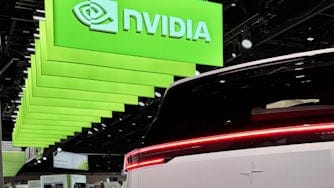Von Mineralien zur Mobilität: Was Elektroautos antreibt
Kobalt, Lithium, Glimmer und Nickel. Diese vier Materialien sind vermutlich nicht das Erste, was Ihnen in den Kopf kommt, wenn es um Elektrofahrzeuge geht – dabei spielen sie eine so entscheidende Rolle auf dem Weg hin zur Mobilität der Zukunft. Dieses Material-Vierergespann ist nämlich die Grundlage für den elektrischen Antrieb; es erweitert die Reichweite, verbessert die Sicherheit und optimiert die Effizienz. Aber was genau macht diese seltenen Erden so besonders?
Often referred to as risk materials, these minerals are essential ingredients for producing lithium-ion batteries used in EVs. They have earned their reputation due to the location of their deposits, often in high-risk areas that may present human rights and environmental concerns if not sourced responsibly.
Understanding how and where these are sourced, as well as setting strict standards for suppliers, are fundamental to mitigating risks associated with the extraction. Here’s where Circulor’s blockchain technology comes into the picture.
This innovative approach ensures traceability from raw materials to the finished product. Blockchain has revolutionized supply chain visibility, offering an immutable, digital, and fully transparent way to trace materials. This means we can accurately track how these minerals are transported, processed, and extracted, right back to their source.
So, what makes these materials so unique? Let's explore the answers.


Cobalt & lithium
Cobalt is a key player behind the scenes, working diligently in the stability of lithium-ion batteries. It acts as an important component in the battery's cathode, which is one of the two electrodes. The cathode is the positive terminal where electrochemical reactions take place during both charging and discharging.
The presence of cobalt helps maintain the integrity of the cathode material over numerous charge and discharge cycles, reducing the risk of performance degradation. In essence, cobalt acts as a stabilizing agent that allows the battery to function consistently and efficiently over its lifespan. By ensuring the battery remains stable and durable over time, cobalt significantly extends the battery's longevity.
What would a lithium-ion battery be without, you guessed it, lithium (a highly reactive and lightweight alkali metal, even the lightest metal in the periodic table)? These two reasons – and its exceptional electrochemical properties – allow for highly energetic and efficient storage of electricity, providing the energy needed to propel EVs.
It's the lithium ions that move back and forth between the anode and cathode during charging and discharging, creating an electrical current which powers the car. This movement of ions is what allows the battery to store and release energy. This means that lithium-ion batteries can store a significant amount of energy in a relatively small and lightweight package, which is essential for extending the driving range of EVs.
Being a lightweight metal, lithium keeps the overall weight of the EV relatively low, improving energy efficiency and handling.


Mica & nickel
Mica, an often-underappreciated material, plays a crucial role as a thermal barrier in battery packs and modules. Mica is chosen for this task because of its excellent insulating properties and heat resistance. This not only ensures the safety and efficiency of the battery but also contributes to the longevity of the entire system.
Mica's ability to withstand high temperatures and pressures while remaining an excellent electrical insulator makes it a silent but essential material in the EV industry.
Nickel is another pivotal component in lithium-ion batteries, primarily in the form of nickel-cobalt-aluminium (NCA) and nickel-manganese-cobalt (NMC) cathodes. These cathodes enhance the battery's performance, making it capable of delivering both high power and energy density.
Energy density is a measure of how much energy can be stored in a given volume or weight. Nickel’s presence in the cathode allows the battery to pack more power into a relatively compact space, which is a game-changer for the world of EVs. This increased energy density means that lithium-ion batteries can store more energy, leading to longer-lasting charges and extended driving ranges – perhaps around the Rocky Mountains on a single charge?
By using different proportions of nickel, cobalt, and manganese, battery manufacturers can tailor the battery's characteristics to meet specific requirements, such as longer life or greater capacity. In terms of performance, Nickel shines bright. It enhances the power output of NCA and NMC cathodes, enabling batteries to deliver a burst of energy when needed, meaning quick acceleration and regenerative braking.

As you can see, these risk materials are not just special; they are indispensable in powering EVs. We are dedicated to monitoring and addressing concerns related to the sourcing and environmental impact of these materials. The EV industry is continually working on research and development to reduce our dependence on these materials, making EVs even more sustainable.
So, the next time you hop into an electric vehicle, remember that it's powered by a remarkable combination of cobalt, mica, lithium, and nickel, making it a marvel of modern engineering. These materials are the backbone of EVs, ensuring they're not just a mode of transportation but performing on all... cells? (We really need to find better analogies for the electric age.)


